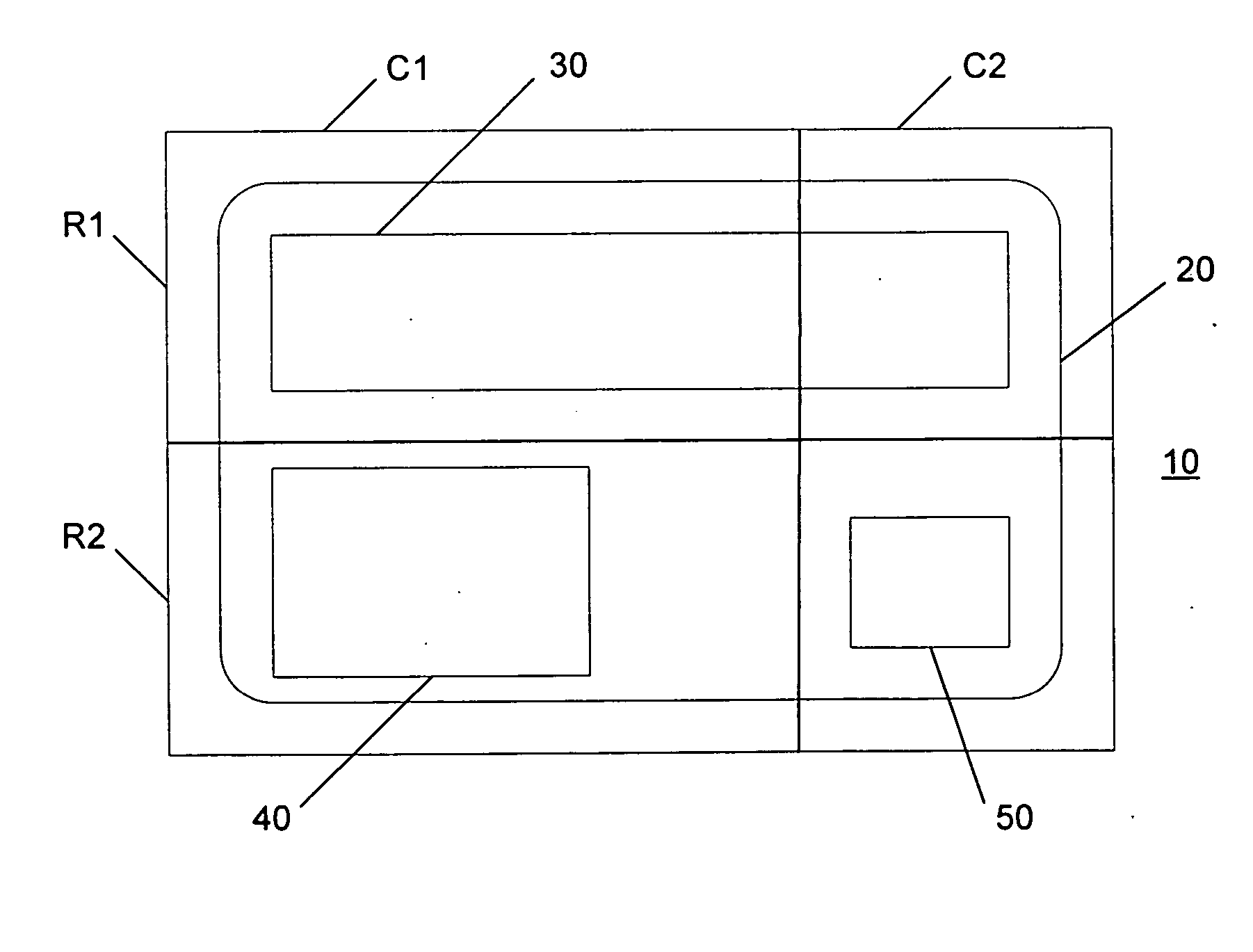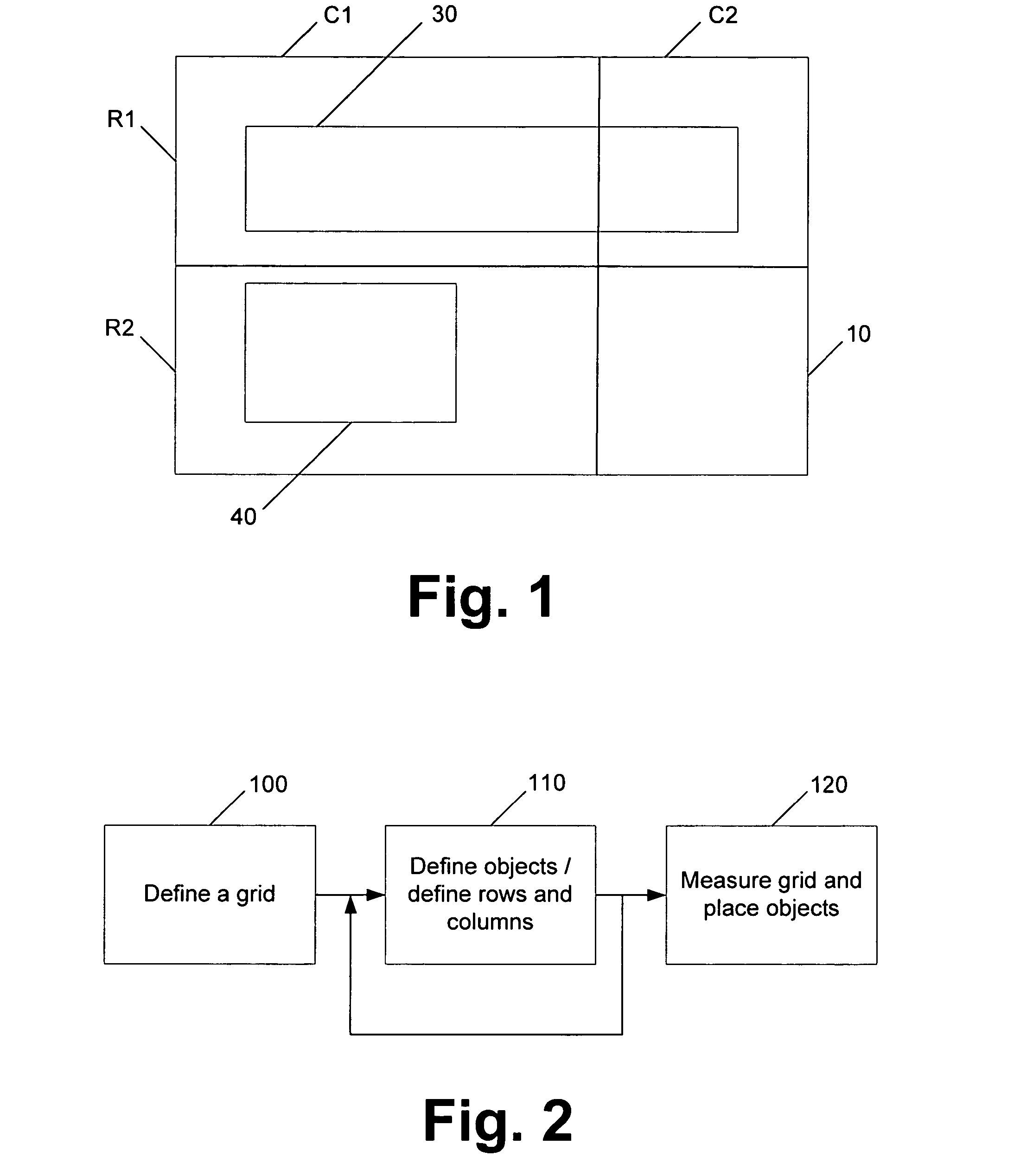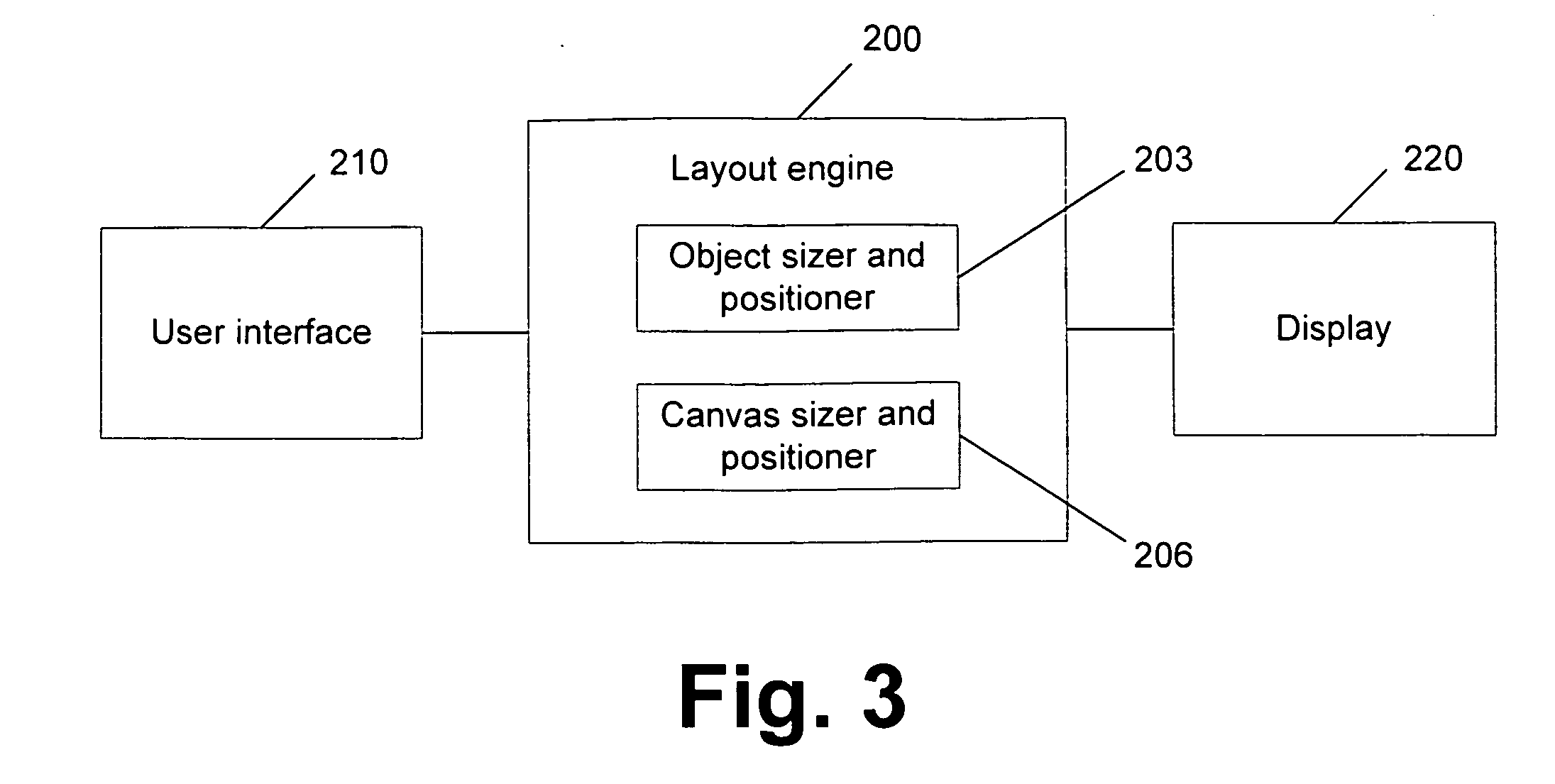Grid canvas
a grid canvas and object technology, applied in the field of computer graphics, can solve the problems of poor case presentation, inability to get all the elements to resize in an intelligent manner, and inability to meet the needs of users,
- Summary
- Abstract
- Description
- Claims
- Application Information
AI Technical Summary
Benefits of technology
Problems solved by technology
Method used
Image
Examples
Embodiment Construction
[0024] The present invention is directed to a layout in which objects are attached to a virtual grid of row and column gridlines, which are defined separately. The relationship between objects and grid is bi-directional so that expanding / collapsing the object will push the gridlines, and moving the gridline will expand / collapse the object. Such a layout mechanism is referred to herein as the “grid canvas” layout mechanism.
[0025] An exemplary grid canvas layout is shown in FIG. 1. The grid canvas layout mechanism is a cooperation between the parent and the children. The parent 10 is effectively a canvas on which objects 30, 40 can be drawn on at will in any location, and objects remain where placed. At any time, the grid canvas 10 may be split into as many rows R and columns C as desired. Each child of the grid canvas maintains a grid bounding box, along with margins relative to that box. For example, the grid bounding box for object 30 is all of row R1 (i.e., R1C1:R1C2). Margin set...
PUM
 Login to View More
Login to View More Abstract
Description
Claims
Application Information
 Login to View More
Login to View More - R&D
- Intellectual Property
- Life Sciences
- Materials
- Tech Scout
- Unparalleled Data Quality
- Higher Quality Content
- 60% Fewer Hallucinations
Browse by: Latest US Patents, China's latest patents, Technical Efficacy Thesaurus, Application Domain, Technology Topic, Popular Technical Reports.
© 2025 PatSnap. All rights reserved.Legal|Privacy policy|Modern Slavery Act Transparency Statement|Sitemap|About US| Contact US: help@patsnap.com



